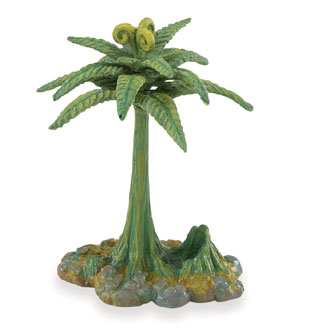Fabulous Ferns – Part of a Dinosaur’s Diet
Ferns – Hangers on from the Age of Reptiles
There are an estimated 12,000 different species of ferns in the world, although ferns can be found in most gardens and some types of fern are a common sight, they are representatives of a very ancient and important group of plants. They pre-date the evolution of humans, mammals, reptiles and birds, their origins can be traced to the Late Devonian period, approximately 360 million years ago.
Fabulous Ferns
The study of ferns is called Pteridology (pronounced ter-ree-doh-ol-low-gee), from the Greek word for ferns. There are a number of ways in which plants can be classified as ferns but they are usually identified by their large, divided, frond-like leaves that carry the reproductive spore producing organs called sporangia.
Although it is difficult to trace the origin and evolution of ferns (there is a lack of fossil evidence to help scientists), we do know from the different types of fossil ferns discovered, that there were many more types of ferns in the past. As a group they flourished, forming a substantial part of the diet of many ancient plant-eating creatures from mammal-like reptiles such as the sail-backed herbivore Edaphosaurus to the huge herbivorous dinosaurs that were to come later in the history of life on Earth. Ferns thrived as the Age of Reptiles began, forming the dominant herbaceous, ground-layer plants.
Fossils of ferns from the time of the dinosaurs have been found all over the world, from the island of Spitsbergen in the north to Antarctica in the south. They would have helped to feed of many of the best known and most famous plant-eating dinosaurs of all, Stegosaurus and Diplodocus in the Jurassic, and Ankylosaurus and Triceratops in the later Cretaceous for example.
A Model of a Tree Fern
Visit Everything Dinosaur’s website to see models and replicas of prehistoric plants: CollectA Prehistoric Life Models.
Ferns dominated the understorey of forests during the Age of Reptiles and would have been eaten by a range of prehistoric animals including dinosaurs.
Fossil Ferns
So abundant and diverse were ferns before the rise of flowering plants, that is has been estimated that for every species of fern living today, there are nine fossil species. Indeed, palaeobotanists (those scientists who specialise in studying ancient plant life), have written ten times more scientific papers on extinct ferns than on the species around today. In fact many of the ferns to be found in the more remote parts of the world, such as the jungles of Indonesia and Malaysia have yet to be studied in detail.
Now thanks to the scientists at Tomorrow Garden and their clever plant propagation technology, dinosaur fans have the chance to grow their own exotic ferns. Tomorrow Garden sells a range of fascinating plants, with each kit being supplied with everything required to help preserve rare plants from around world, giving growers the chance to help protect endangered species.
In addition, to celebrate the launch of Tomorrow Garden, the company has organised a FREE PRIZE DRAW, recognising the role ferns played as dinosaur food, there are lots of dinosaur themed prizes including a top prize of an all-expenses trip to the Natural History museum, as well as hundreds of runners up prizes of dinosaur models supplied by Everything Dinosaur.
So if you or your school wants to have a go at growing some fern species that represent the type of food that the likes of Stegosaurus munched upon 145 million years ago, now’s your chance.
This competition is now closed.


